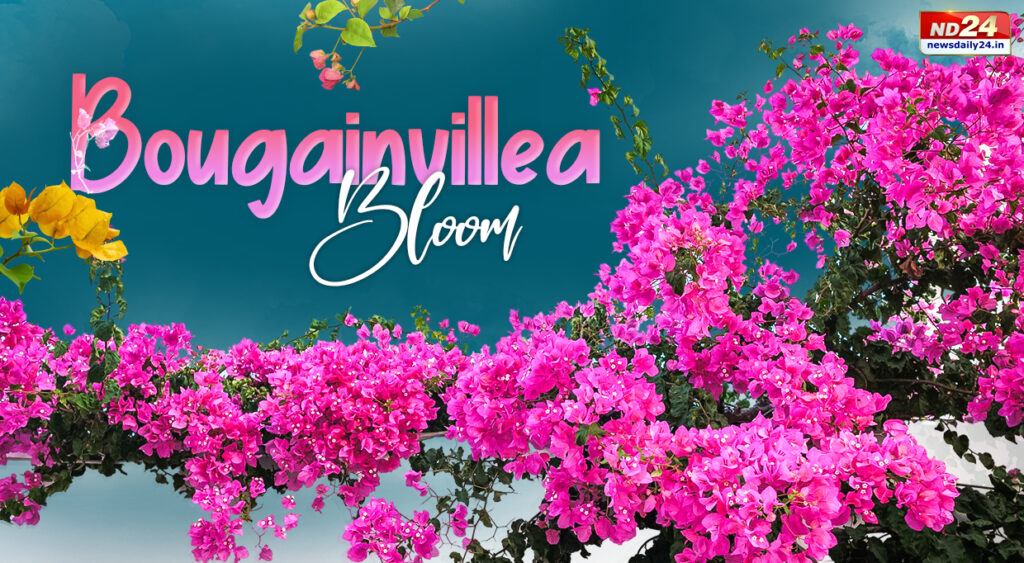Bougainvillea is a vibrant, eye-catching plant that can transform any garden into a tropical paradise. Known for its stunning, colorful bracts, this plant isn’t just a pretty face. Did you know that bougainvillea is native to South America and was first discovered by a French botanist named Philibert Commerçon? This is Grenada’s national flower.
Bougainvilleas are scattered throughout the warmest parts of the world — the Caribbean, the Mediterranean, India, Mexico, Australia, the southern United States — but the flowers are actually native to Rio de Janeiro. They were first found there in 1768 by Philibert Commerçon, a French explorer and naturalist. Commerçon named the flowers after his good friend Louis-Antoine de Bougainville, the French admiral with whom Commerçon sailed around the world from 1766 to 1769.
It wasn’t until the early 19th century that the bougainvillea was brought to Europe. Soon, France and England became thriving producers of the flower and eventually began trading it to Australia and other countries around the world.
Interestingly, bougainvillea isn’t just one plant but a genus containing about 18 different species.
Whether you’re looking to add a splash of color to your garden or simply curious about this fascinating plant, here are some facts that will deepen your appreciation for bougainvillea.
- Bougainvillea’s Unique Characteristics:
This plant is not just about pretty flowers. It has some unique traits that make it stand out in the plant kingdom. Bougainvillea’s vibrant colors come from bracts, which are modified leaves, not petals. The actual flowers of bougainvillea are small, white, and usually found in the center of the bracts. Bougainvillea can grow as a vine, shrub, or tree, depending on how it is pruned and supported.
- Bougainvillea in Culture and Symbolism:
This plant holds a special place in various cultures and carries significant symbolism. In some cultures, bougainvillea symbolizes passion and beauty. It is often used in festivals and celebrations for its vibrant and cheerful appearance. Bougainvillea is a popular choice for wedding decorations in tropical regions.
- Bougainvillea’s Environmental Impact:
Beyond its beauty, bougainvillea plays a role in the environment. Bougainvillea provides shelter and food for various insects and birds. It can help prevent soil erosion due to its extensive root system. Bougainvillea is a low-maintenance plant, requiring minimal water and care once established.
- Fun Facts About Bougainvillea:
Bougainvillea can change color. Some varieties can shift from pink to purple as they age. The plant has thorns, which can make handling it a bit tricky. Bougainvillea can be grown as a bonsai, making it a unique addition to any bonsai collection. There are over 300 varieties of bougainvillea, each with its own unique color and growth habit. Bougainvillea can live for many years, with some plants known to be over 50 years old. The plant is often used in landscaping to create stunning floral displays and natural fences.
- Health Benefits and Medicinal Uses:
While primarily ornamental, the Bougainvillea Tree also offers medicinal properties, particularly in traditional medicine. Bougainvillea extracts are used to treat coughs, colds, and asthma, thanks to their anti-inflammatory and expectorant properties. The plant’s antimicrobial properties make it effective in treating minor skin infections and wounds. In some cultures, Bougainvillea tea is consumed to alleviate digestive issues such as diarrhea and bloating.
- Environmental and Economic Impact:
Bougainvillea’s low water requirements and ability to thrive in poor soil reduce the demand for resources, promoting sustainable gardening practices. The plant supports local economies through its use in horticulture, landscaping, and ornamental trade. Bougainvillea’s resilience to harsh conditions makes it a valuable species for reforestation and climate-resilient landscaping.
- Bougainvillea Around the World:
Bougainvillea has made its mark globally, adapting to various climates and becoming a beloved plant in many regions. In the Mediterranean, bougainvillea is a common sight, often climbing walls and trellises. It is also popular in tropical and subtropical regions, where it can bloom year-round. Bougainvillea is the official flower of several cities, including Ipoh in Malaysia and Tagbilaran in the Philippines.
- Bougainvillea’s Vibrant Legacy:
Bougainvillea isn’t just a plant; it’s a burst of color that transforms landscapes. From its origin in South America to its global popularity, this plant has a fascinating journey. Its vibrant bracts often get mistaken for flowers, adding to its charm. Bougainvillea thrives in warm climates, making it a favorite in tropical and subtropical regions. Its resilience to drought and low maintenance needs make it a gardener’s dream. Whether used as a climbing vine, a bush, or even a bonsai, bougainvillea adds a splash of color and life to any space.







